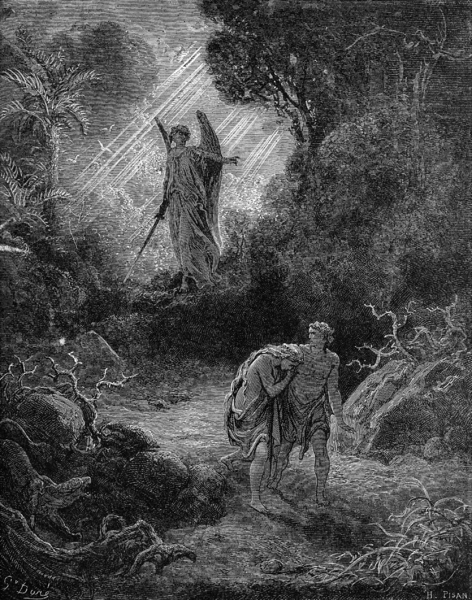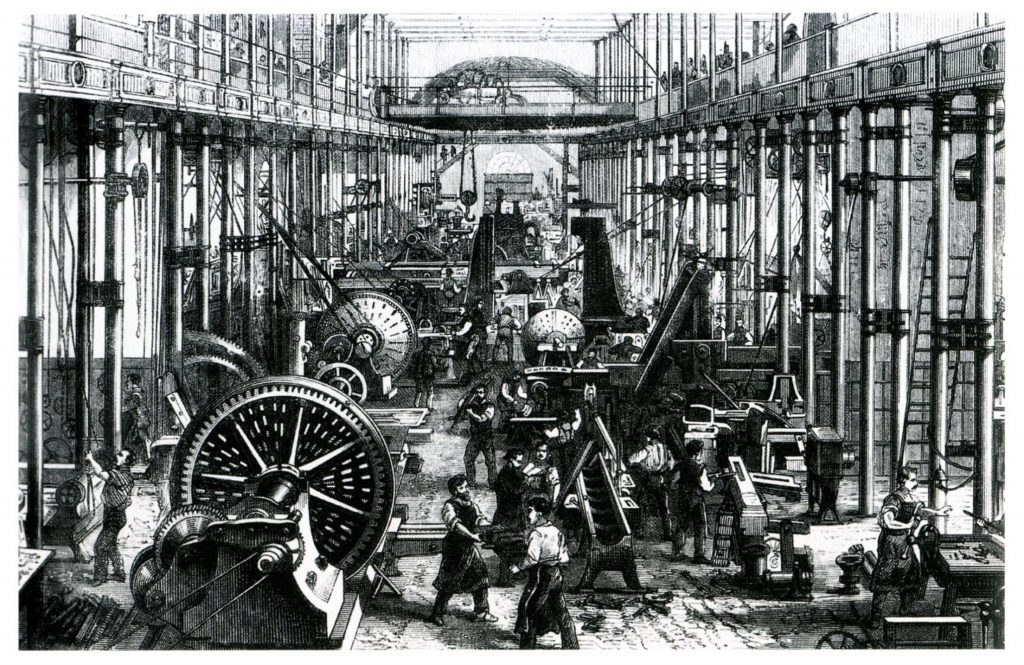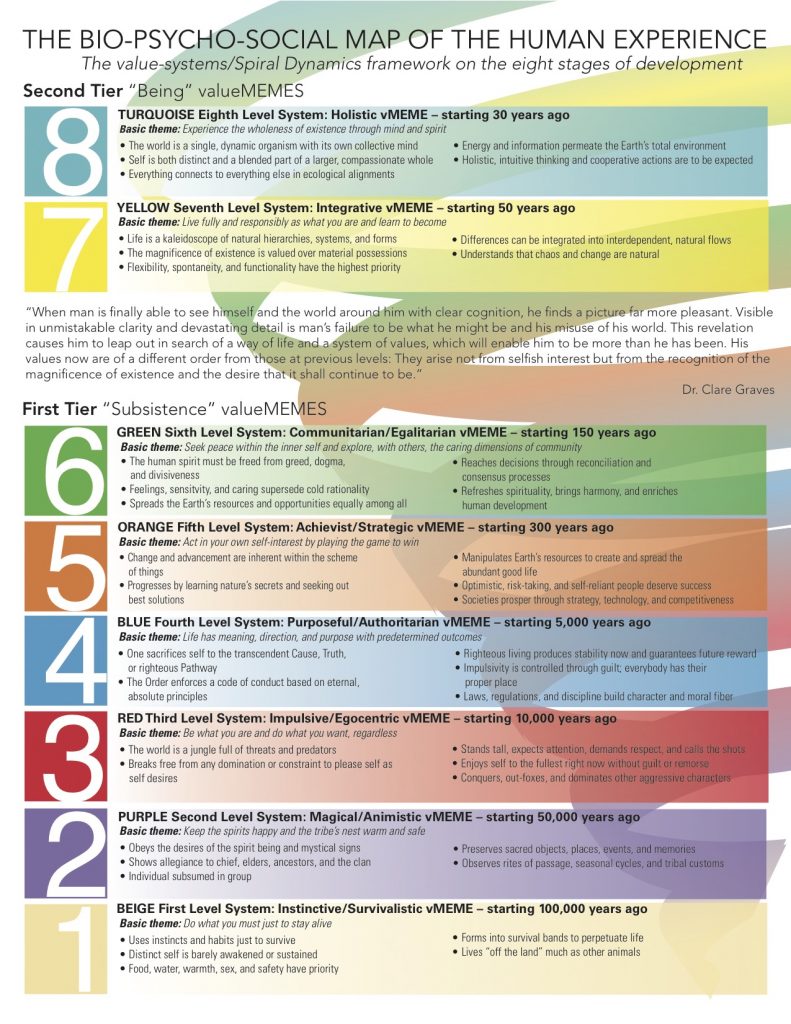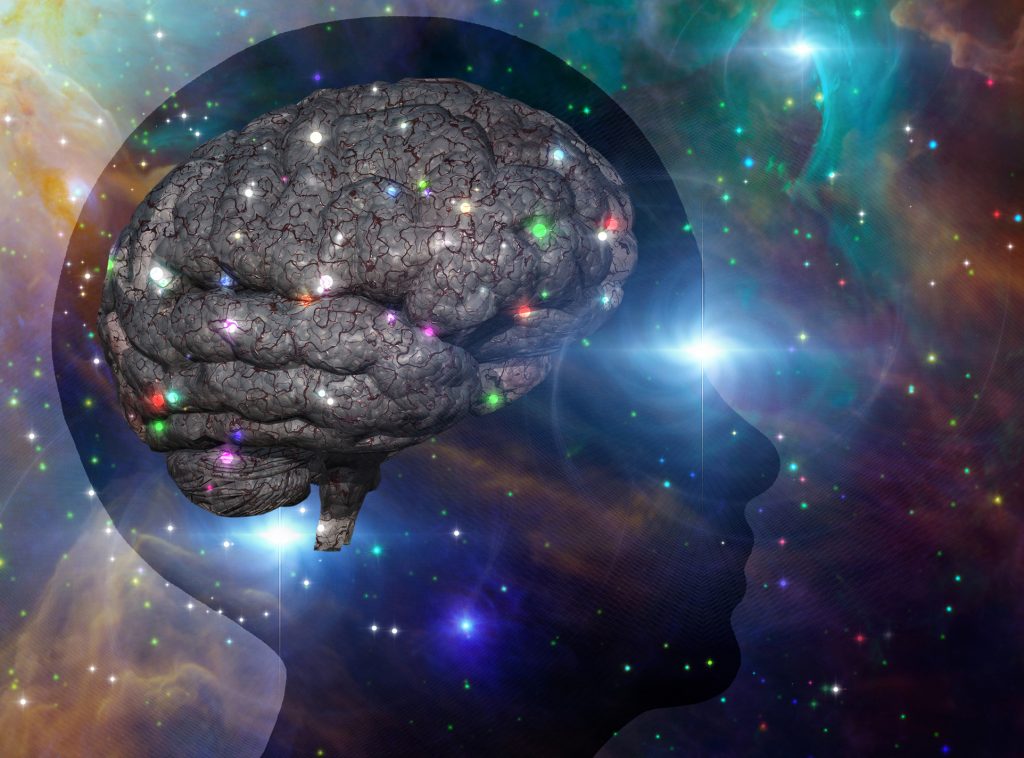Paradise Lost | The Sequel
John Milton’s epic poem about the fall of Man from heaven and his ultimate expulsion from the Garden of Eden has so many parallels to the story we seem to be writing for ourselves. His is of a biblical nature that chronicles the frailty and temptation of mankind, while ours is about us blindly destroying, piece-by-piece, the Heaven on Earth that Mother Nature has given us. Our paradise is an era which started about 11,000 years ago called the Holocene which has enabled life on Earth to thrive the way it has for as long as it has.
10,600 Years in the Garden of Eden
 If Milton were alive today, he would likely categorize the beginning of the Holocene Epoch as God’s final gift to man, in the form of Heaven on Earth, as a way to test our ability to transcend our subsistent cravings and desires. Milton lived in the 17th century and had no idea of the impending changes that would revolutionize human existence just one hundred years into the future. During his lifetime, man led a humble agrarian existence inseparable from nature and from God. Simple living and high thinking were a way of life for his and for hundreds of generations before him. This paradise could have indeed continued for eternity under those living conditions, but over time the simple spiritual life grounded in Christian orthodoxy became increasingly out of touch with life’s existential challenges. There were dark days like the Great Plague and the Spanish Inquisition, among many other forgettable periods in Europe’s history, which gave fuel to the notion of reformation and individual expression. The desire to break free from the monotony and the repression in order to find alternative answers to life’s challenges began to spread. With reformation came the dismantling of rigid monolithic structures such as the church and the monarchy. This, in turn, gave voice to peasant rebellions that eventually led to the freeing of individual thought, unencumbered by religion and free from the fear of God and nature’s wrath.
If Milton were alive today, he would likely categorize the beginning of the Holocene Epoch as God’s final gift to man, in the form of Heaven on Earth, as a way to test our ability to transcend our subsistent cravings and desires. Milton lived in the 17th century and had no idea of the impending changes that would revolutionize human existence just one hundred years into the future. During his lifetime, man led a humble agrarian existence inseparable from nature and from God. Simple living and high thinking were a way of life for his and for hundreds of generations before him. This paradise could have indeed continued for eternity under those living conditions, but over time the simple spiritual life grounded in Christian orthodoxy became increasingly out of touch with life’s existential challenges. There were dark days like the Great Plague and the Spanish Inquisition, among many other forgettable periods in Europe’s history, which gave fuel to the notion of reformation and individual expression. The desire to break free from the monotony and the repression in order to find alternative answers to life’s challenges began to spread. With reformation came the dismantling of rigid monolithic structures such as the church and the monarchy. This, in turn, gave voice to peasant rebellions that eventually led to the freeing of individual thought, unencumbered by religion and free from the fear of God and nature’s wrath.
400 Hundred Years of Enlightenment
 Individual empowerment ushered in the Age of Enlightenment, which brought us—among many other new human pursuits—modern philosophy, politics, science, and economics. Man soon became obsessed, not by natural and spiritual phenomena, but by a new paradigm called Pantometry, the obsessive need to measure everything. The world soon became divided into two realms, the measured and the immeasurable. What wasn’t measurable quickly disappeared from human consciousness. The measurable became fertile grounds for ideas that competed for survival, where the most meritorious endured. Within a few short decades, the obsession with quantification culminated in one big cultural shift known as the Industrial Revolution. This is a stage in human history when we made the fateful decision that nature must be tamed and that we must become our own gods.
Individual empowerment ushered in the Age of Enlightenment, which brought us—among many other new human pursuits—modern philosophy, politics, science, and economics. Man soon became obsessed, not by natural and spiritual phenomena, but by a new paradigm called Pantometry, the obsessive need to measure everything. The world soon became divided into two realms, the measured and the immeasurable. What wasn’t measurable quickly disappeared from human consciousness. The measurable became fertile grounds for ideas that competed for survival, where the most meritorious endured. Within a few short decades, the obsession with quantification culminated in one big cultural shift known as the Industrial Revolution. This is a stage in human history when we made the fateful decision that nature must be tamed and that we must become our own gods.
In the Gravesian development model that has been at the center of my work for the good part of two decades, the Age of Enlightenment signaled a level of psychosocial development known primarily for man’s desire to uncover the secrets of the universe through scientific and quantitative methods. Strategic manipulation of everything the mind could perceive became the new definition of human triumph. To our intellect, this was indeed the work of a God that was not at the mercy of nature or some old traditional dogma. Henceforth, there was little room left for faith, mystery, the unknown, and the unquantifiable. Every time nature presented us with a challenge, or a disease, our instinct was to fight it and to tame it. We studied symptoms for every ailment, social and biological, through the innocuous lens of science that often excluded the deeper ecology in which we live and breathe. We dismissed all the non-microbial causes that ail the body and the mind. We organized ourselves into 40-hour workweeks. We labored in factories that belched black smoke for centuries. We dug up the ground and disrupted the organic cycles of life, death, and carbon. We monetized everything that we quantified and made it scarce, creating a global economy based on the concept of scarcity, which is the opposite of nature’s abundance.
During the last four centuries, Pantometry became a scaled-down endeavor that measured phenomena with short-term feedback loops. Good or bad, we liked feedback as long as it was in response to measurable input. What we liked more is the idea that our adventures in taming nature showed immediate positive results that signaled modernity, prosperity, and success. Quantification included everything that was monetizable and nothing that wasn’t. Cutting down the Amazon forest to create farmable land was a victory that added to the wealth of the farmer and to the Gross Domestic Product. Using chemical fertilizers to improve crop yields was the answer to feeding 7 billion people. Fossil fuels and nuclear energy became the engines of prosperity in a human era based on scientific discoveries and the measurable trickeries of the human mind.
Seventy Years of Accelerated Change
 To Mother Nature, this socio-economic system created by humans was one of many systems that fell within the manageable boundaries of the Holocene. But things began to change after the end of World War II. The industrialized world turned its attention to peaceful trade and consumption, which became the newest global roadmap for modern and prosperous times. While we decided to end all wars against each other, we inadvertently came together to start a slow but deadly war against Mother Nature’s key ecosystems. As more and more countries chose this path, we began to test the limits of this Heaven on Earth. In the 1960s and 70s, the world started adopting the American lifestyle for consumption and everything that came with it. From the development of modern infrastructure and transportation systems to animal-based high-protein diets, emerging economies, as well as the industrialized world, loved this new and insatiable appetite for unbridled consumption. With these changes, the acceleration to test the limits of Earth’s ecosystems went into high gear. Then came the explosion in world population and the coming online of newly industrialized countries like China, India, and Brazil. In the mere span of two decades, the size of this worldwide consumer class practically doubled, pushing the boundaries of all Earth’s ecosystems closer to a highly dangerous tipping point.
To Mother Nature, this socio-economic system created by humans was one of many systems that fell within the manageable boundaries of the Holocene. But things began to change after the end of World War II. The industrialized world turned its attention to peaceful trade and consumption, which became the newest global roadmap for modern and prosperous times. While we decided to end all wars against each other, we inadvertently came together to start a slow but deadly war against Mother Nature’s key ecosystems. As more and more countries chose this path, we began to test the limits of this Heaven on Earth. In the 1960s and 70s, the world started adopting the American lifestyle for consumption and everything that came with it. From the development of modern infrastructure and transportation systems to animal-based high-protein diets, emerging economies, as well as the industrialized world, loved this new and insatiable appetite for unbridled consumption. With these changes, the acceleration to test the limits of Earth’s ecosystems went into high gear. Then came the explosion in world population and the coming online of newly industrialized countries like China, India, and Brazil. In the mere span of two decades, the size of this worldwide consumer class practically doubled, pushing the boundaries of all Earth’s ecosystems closer to a highly dangerous tipping point.
The Tipping Point
In a landmark study published on March 2, 2015 in the journal Anthropocene Review, some of the world’s leading climatologists show convincing evidence that our globalized economy has become a planetary-scale geological force that can no longer be ignored. In research that covered decades of data, they established that there are several highly correlated relationships that tie modern socio-economic activity to the decline of Earth’s ecosystems. Many of these climate scientists are in agreement that we have reached a point where we have clearly moved beyond the physical boundaries of the Holocene. What does that mean? It essentially means that we are now on our own and that in 70 years of accelerated modernization, we have not only tamed nature but also broken its resilient ability to help us maintain a safe environment conducive for a thriving humanity. In our myopic Pantometry, what we didn’t measure fell outside our collective consciousness and is now reappearing to us as ‘fate.’ Appropriately, this new era is called the Anthropocene. The term was coined in the year 2000 by chemist Paul Crutze. It comes from the Greek root word for human, anthropos, and it refers to the current Human Age, a new geologic era in which the future of all life on the planet is entirely dependent on our actions.
This is where we are today. It’s a stage scientists call the Age of Acceleration and what futurist Ray Kurzweil calls ‘entering the second half of the chessboard,’ where change moving forward becomes exponential and the possible outcomes become exponentially more difficult to predict. So, is it possible that we have reached the point of no return, and the ideal conditions for life on Earth that we’ve enjoyed for the last 11,000 years are coming to an end? If environmental damage is happening at such an exponential rate, is it possible that the 2015 datasets, which partially rely on research done more than a decade earlier, are already outdated? Recent climate events seem to confirm just that. The bigger question is: why do we continue to ignore the warning signs? Is it that the problem is so big that we’re simply sticking our heads in the sand hoping it will go away on its own? Or is it something so removed from our current global socioeconomic consciousness that the mere realization of its impact has the potential to uproot the belief systems of the last half millennium?
There is something about this phenomenon that is so akin to the legend of the Native Americans who failed to see Columbus’s ships when they passed by—presumably because huge ships were so alien to their experience that their perceptions could not register what was happening, and they literally failed to ‘see’ the ships. The story speaks volumes to phenomena that fall outside our conscious awareness, and I would argue that this is precisely why we can’t see these impending environmental disasters. Environmentalists have a term for this. It’s called the “black elephant.” Borrowing from Nassim Taleb’s black swan phenomenon about rare but highly impactful events that fall outside normal expectations, with the key exception that the elephant is widely visible, but we keep ignoring its presence or the deep impact from the damage we are causing to the Earth’s ecosystems.


Typically, a black swan event renders human perception about certain safe assumptions obsolete, but with so many, highly visible black elephants, the human mind can’t possibly imagine life so drastically altered from what we’ve known to be the safe assumptions of the last 500 years. Because of the deep universal shock these events will have on us, we have collectively repressed the issue of climate change, making ourselves far more vulnerable when disaster-related events driven by climate take place. We are indeed moving at exponential speed on that second half of the chessboard, but we seem to be ignorantly focused on the adrenalin rush from the ride, as global leaders fail to formulate effective measures to manage these existential threats.
The New Pantometry, Measuring What Matters
Addressing these threats to Earth’s ecosystems seems to be a monumental task, but it is one that our species must undertake out of existential urgency. In order for that to happen, our culture-wide values must take a quantum leap from where they are today. In the Gravesian development model I mentioned earlier, we believe that the evolution of human consciousness is an endless quest. It is a psychosocial model that relies on two essential cornerstones that determine how adequately we resolve life’s challenges. The first lies in the problems of existence. It is in how well we identify the depth and breadth of these problems that the necessary Adaptive Intelligence within us (individually and collectively) is triggered and an adequate solution is pursued as our consciousness recalibrates at higher levels.
 The problem we face today is that human existence, so far, has been limited to what we call the ‘values of subsistence’ where we choose to either compete or cooperate, but with little awareness of planetary effects. We are not fully conscious of the fact that we are an inseparable part of Earth’s ecology. We rarely think in terms of the world being a single organism with its own collective mind, or that we are all part of a compassionate, dynamic whole, inseparable from nature. On our journey so far, we’ve identified our problems of existence to be primarily of social, political, or technological in nature. As we exhausted the values of each system, we successfully sought solutions from a higher-level system throughout the Holocene with little regard to problems of existence that lay outside our subsistence worldview, and therein lays humanity’s biggest challenge.
The problem we face today is that human existence, so far, has been limited to what we call the ‘values of subsistence’ where we choose to either compete or cooperate, but with little awareness of planetary effects. We are not fully conscious of the fact that we are an inseparable part of Earth’s ecology. We rarely think in terms of the world being a single organism with its own collective mind, or that we are all part of a compassionate, dynamic whole, inseparable from nature. On our journey so far, we’ve identified our problems of existence to be primarily of social, political, or technological in nature. As we exhausted the values of each system, we successfully sought solutions from a higher-level system throughout the Holocene with little regard to problems of existence that lay outside our subsistence worldview, and therein lays humanity’s biggest challenge.
In his research, Clare W. Graves showed this particular issue to be of utmost concern. His greatest fear was that our species would become complacent as it indulged in the spoils of the lower value systems, ignoring existential threats that lay outside its conscious awareness, thus derailing our emergence back to hunter-gatherer values. He made these predictions in the early 1970s, a few decades before climate change became a major concern. Graves also offered an optimistic scenario where we embark on taking a momentous leap in values requiring completely different mindsets capable of responding to problems of existence that ail all forms of life, not just our own. This is precisely what the Anthropocene calls for since our problems of existence are no longer just sociopolitical or technological in nature. We need to adequately represent the defenseless planet and all her ecosystems. In order to do that, we first and foremost must embark on a comprehensive worldwide campaign to become the voice for the planet. It is in doing so that we gain a fuller picture of our new problems of existence, in order to trigger the needed Adaptive Intelligence capable of addressing the degradation of planetary ecosystems.
In order to have more knowledge about this half of the Gravesian model at the level that addresses planetary survival, we must embody Earth’s problems of existence as our own. Today, initiatives such as the empowerment of the values of the commons, the green revolution, sustainability practices, and regenerative economics, as noble as they are, are operating on partial data, and therefore, much of our Adaptive Intelligence on this issue has remained dormant. We simply don’t have the luxury to wait for these cutting edge systems to reach a tipping point. We simply cannot continue to be caught off guard by reports that show ecosystem degradation to be far worse than what our best predictive models show. As long as parts of the needed science remain unknown, we must focus on maximizing information gathering to generate more predictive models. This seems to be a simple and logical starting point, but full transparency has always been the key to resilient solutions. We must begin by finding ways to bypass the traditional channels of information-gathering and the ways it is currently being disseminated.

Just as we’ve mapped Earth’s geography to the last square block, we need to do the same with its ecology. A new breed of global power brokers needs to create this new mapping with the goal of it becoming a planetary ‘vital signs monitor’ that is easily accessible to us all. Like before, technology will play a crucial role in new ways of procuring information and the dissemination of it. We must record the totality of Earth’s changes if we are to engage in a serious and effective response. Tens of millions of censors and data ports must cover the planet’s surface, its ice and its oceans, creating the massive data pool needed to begin to formulate coordinated global action. This needs to be as much a bottom-up effort as it is top-down, where each citizen of the planet becomes empowered by knowledge about the existential threats facing the biosphere and our own existence.
In short, if we wish to change individual behavior about this super-ordinate threat, full reporting and transparency is a critical starting point. Knowledge is the power that transforms people and cultures. It is the foundation from which all value systems around the world begin to formulate plans that are empowered by their beliefs and traditions. This is where planetary psychosocial change begins. It penetrates all mindsets and worldviews. It disrupts today’s systems and structures that have been complicit in allowing this existential threat to all life to go greatly unnoticed.
Welcome to what Graves called “humanity’s momentous leap.” What we need is essentially a leap into the second half of the chessboard in human psychosocial development where thinking within the new values of the Anthropocene must become the norm of every human, not just the aspirational domain of oracles and prophets. Welcome to the Age of Acceleration of Planetary Awareness. Welcome to humanity’s second journey where we must abandon the subsistent linear thinking that got us here and embrace new and exponential breakthroughs in human consciousness.
Selected Readings
Beck, Don Edward and Cowan, Christopher C. (2006) Spiral Dynamics: Mastering Values, Leadership and Change. Malden, MA: Blackwell Publishing.
Friedman, Thomas L. (2016) Thank You for Being Late, An Optimist’s Guide to Thriving in the Age of Acceleration, New York, NY: Farrar, Straus, and Giroux.
Graves, Clare W. “Human Nature Prepares for a Momentous Leap”, The Futurist, April 1974.
Graves, Clare W. (2005) The Never Ending Quest, eds. Christopher Cowan and Natasha Todorovic Santa Barbara, CA: ECLET Publishing.
Leahy, Stephen “Greenland’s Ice is Melting Four Times Faster than Thought-What it means.” National Geographic. January 21, 2019. https://www.nationalgeographic.com/environment/2019/01/greeland-ice-melting-four-times-faster-than-thought-raising-sea-level Retrieved January 24, 2019.
Steffen, Will et al. (2004) Global Change and the Earth System: A Planet Under Pressure. New York, NY: Springer Berlin Heidelberg.
Steffen, W. et al “The Trajectory of the Anthropocene: The Great Acceleration.” Anthropocene Review. March 2, 2015. https://journals.sagepub.com/home/anr. Retrieved January 12, 2019.
Taleb, Nassim Nicholas (2007) The Black Swan: The Impact of the Highly Improbable, New York, NY: Random House.







The change that will bring the missing perspective for life, of and on the planet, is the feminist perspective; “humanity has held a limited and distorted view of itself due to the subjugation of women”. But also the perspective of all those oppressed in our social structure. (see Allan G. Johnson, in Privilege, Power and Difference.)
Jean Baker Miller, Toward a New Psychology of Women
Pat,
I fully agree with you. I guess we are slowly progressing in that direction. But probably too slow and too late. Testosteron will kill us if we don’t balance it out in time.